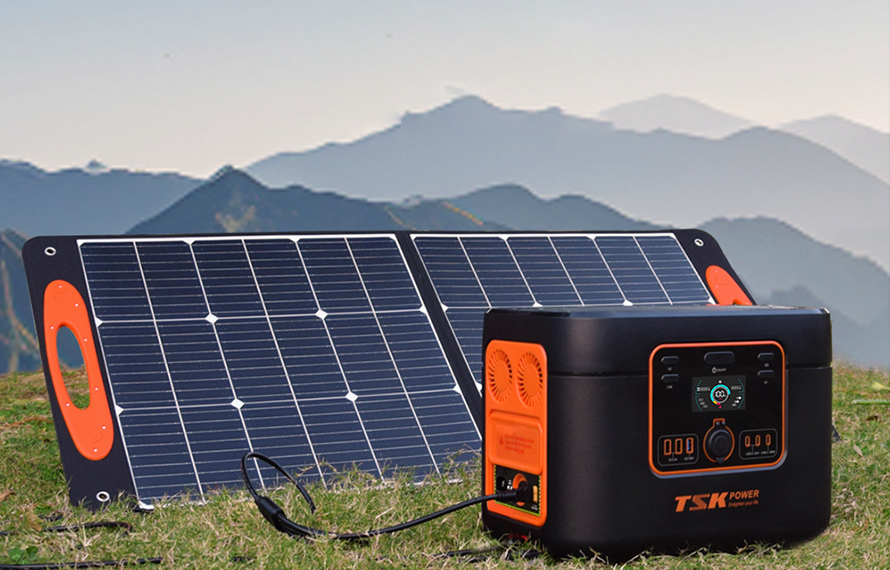An outdoor power supply is a portable energy storage device that can provide power for your mobile phone, tablet, camera, drone and other devices, and can also drive some small household appliances, such as electric fans, electric kettles, hair dryers, etc. Outdoor power supplies are very practical in camping, RVs, live broadcasts, shooting, emergency and other scenarios, and are a must-have artifact for outdoor enthusiasts.

However, do you know when to charge the outdoor power supply? How to charge and discharge correctly to extend the service life of the power supply and ensure the safety and stability of the power supply? Today, we will share with you some tips for charging outdoor power supplies, hoping to help you.
Charging methods of outdoor power supplies
Outdoor power supplies on the market generally support multiple charging methods, the common ones are as follows:
AC charging: This is the most commonly used charging method, which is to charge the outdoor power supply with a household socket. The advantage of this method is fast charging speed, and the disadvantage is that it requires a stable power grid supply and is not suitable for use in the wild.
Solar charging: This is an environmentally friendly charging method, which is to use solar panels to convert solar energy into electrical energy to charge the outdoor power supply. The advantage of this method is that it can utilize natural resources and is not restricted by the power grid. The disadvantage is that the charging speed is slow and is affected by weather and light angles, so it is not suitable for use on rainy days or at night.
Car charging: This is a convenient charging method, which is to use the vehicle's cigarette lighter interface to charge the outdoor power supply. The advantage of this method is that it can be charged while driving and does not take up space. The disadvantage is that the charging speed is average and is affected by the vehicle voltage, so it is not suitable for use when parking or turning off the engine.
Type-C charging: This is an emerging charging method, which is to use the Type-C interface to charge the outdoor power supply. The advantages of this method are fast charging speed and good compatibility. The disadvantage is that a charger or power supply that supports the PD protocol is required, and it is not suitable for use without such equipment.
Charging time of outdoor power supply
The charging time of outdoor power supply mainly depends on your usage needs and usage environment. Generally speaking, there are several principles for reference:
Charge as you use it: This is the most basic principle, that is, while using the outdoor power supply, try to charge it and keep it fully charged. This can avoid over-discharge of the power supply, extend the life of the battery, and avoid the embarrassment of no power available in an emergency.
Unplug when fully charged: This is common sense, that is, unplug the charger in time after the outdoor power supply is fully charged to avoid overcharging. Although the current outdoor power supply generally has a built-in BMS protection system to prevent overcharging, long-term overcharging will still affect the performance of the battery and even cause safety hazards.
Low power charging: This is a trick, that is, when the power of the outdoor power supply is less than 10%, charge it in time to avoid over-discharge. Over-discharge will cause the capacity of the battery to decrease or even damage the battery. Of course, don't wait until the power supply is completely exhausted before charging, which will affect the charging efficiency and even fail to start charging.
Timely charging: This is a strategy, that is, according to different charging methods, choose the right charging time and make full use of charging resources. For example, if you use solar charging, it is best to charge when the sun is full during the day, rather than on cloudy days or at night; if you use vehicle charging, it is best to charge while driving, rather than when parking or turning off the engine.
Charging precautions for outdoor power supplies
In addition to paying attention to the charging method and timing of outdoor power supplies, you should also pay attention to the following aspects:
Charging environment: The charging environment of outdoor power supplies should be kept dry, ventilated, and clean, avoiding adverse factors such as high temperature, humidity, and dust to prevent power supply damage or failure.
Charging equipment: The charging equipment of outdoor power supplies should be regular, qualified, and matched, and avoid using inferior, incompatible, and overloaded equipment to prevent power supply damage or danger.
Charging monitoring: The charging monitoring of outdoor power supplies should check the charging status of the power supply in time to avoid abnormal charging or charging for too long, and prevent power supply problems or affect use.
The above are the tips for outdoor power supply charging that we share with you, and I hope it will be helpful to you.
 2024-08-21
2024-08-21
























